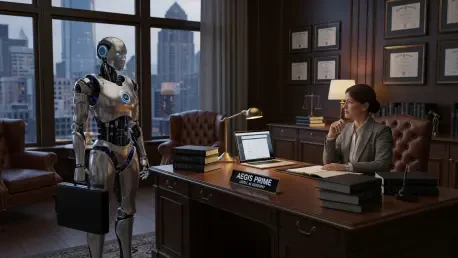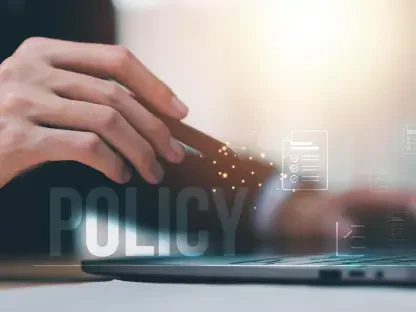Short introduction Meet Desiree Sainthrope, a distinguished legal expert with deep expertise in drafting and analyzing trade agreements, as well as a recognized authority in global compliance. With a keen interest in the intersection of law and technology, particularly the transformative potential of artificial intelligence, Desiree offers unique insights into how generative AI tools are reshaping legal practice. In this interview, we explore the evolving landscape of legal tech, the persistent importance of prompt engineering skills for attorneys, and the balance between leveraging new tech features and maintaining tailored expertise in a rapidly changing field.
How are legal tech companies working to make generative AI tools more user-friendly for lawyers?
Legal tech companies are focusing on simplifying the user experience by reducing the need for lawyers to craft detailed, technical prompts from scratch. They’re developing features like pre-built workflows and prompt libraries, which provide ready-made templates for common legal tasks. Additionally, some platforms have back-end systems that automatically convert simple, plain-language requests into optimized prompts for the AI. The goal is to lower the barrier to entry, so even attorneys with minimal tech experience can use these tools effectively without needing to understand the intricacies of how the AI processes input.
Can you explain what pre-built workflows and prompt libraries are, and how they benefit attorneys in practice?
Absolutely. Pre-built workflows are essentially guided processes within a tool that walk lawyers through specific tasks, like drafting a contract or conducting legal research, with pre-set steps and prompts already embedded. Prompt libraries, on the other hand, are collections of tested, reusable prompts tailored for different legal scenarios—think templates for summarizing case law or generating client memos. These resources save time, ensure consistency, and help attorneys who might not be confident in writing prompts get reliable results from AI tools without starting from zero.
Why do you think prompt engineering skills remain critical for lawyers despite these technological advancements?
Even with these user-friendly innovations, prompt engineering is still crucial because of how large language models, or LLMs, operate. These models are highly sensitive to input—they rely on the specificity and clarity of a prompt to generate relevant output. A generic or poorly phrased prompt can lead to vague or even incorrect results, which in a legal context can be disastrous. Beyond that, every law firm has its own style, and clients often have unique guidelines. Pre-built tools can’t always capture those nuances, so lawyers need to know how to tweak or build prompts to get outputs that align with specific expectations.
What kind of challenges do attorneys face with AI tools if they lack strong prompt engineering skills?
Without solid prompt engineering skills, attorneys might struggle to get the precise results they need from AI tools. For instance, if a prompt isn’t clear about the jurisdiction or context for a legal question, the AI might spit out irrelevant case law or generic advice that doesn’t apply. There’s also the risk of over-reliance on the tool’s output without critically assessing it, which can lead to errors in client deliverables. In high-stakes legal work, even small missteps—like missing a key detail in a contract draft due to a bad prompt—can have big consequences.
How do unique firm preferences and client guidelines influence the need for customized prompts?
Law firms often have distinct ways of approaching legal work—whether it’s a specific tone for client communications or a preferred structure for briefs—and clients might have their own strict requirements, like using certain terminology or focusing on particular issues. Pre-built prompts or automated systems can’t fully account for these variations. Lawyers need to adapt or create prompts that reflect those preferences to ensure the AI’s output matches the firm’s standards or a client’s expectations. It’s about personalizing the tech to fit the human and organizational context.
Can you share an example of a situation where customizing a prompt was necessary to meet a specific legal need?
Sure, I recall working with a client in the tech industry who had very specific requirements for how intellectual property clauses should be drafted in their contracts. A standard prompt or template from a library just wouldn’t cut it because it didn’t address their unique concerns about data privacy and cross-border IP protections. I had to craft a detailed prompt that instructed the AI to prioritize those elements and reference specific regulations. The result was a draft that aligned perfectly with the client’s expectations, saving us hours of manual revisions.
What risks come with relying too heavily on pre-built workflows or automated prompt systems in legal practice?
Over-reliance on pre-built systems can lead to a kind of complacency where attorneys stop questioning the AI’s output or fail to notice when it doesn’t fit the specific case. These tools are great starting points, but they’re not foolproof—there’s a risk of missing critical nuances if you don’t double-check or adjust the results. Also, if a firm depends too much on generic templates, they might lose the ability to innovate or handle complex, non-standard cases that require creative problem-solving and tailored prompting.
How can law firms encourage their attorneys to keep sharpening their prompt engineering skills?
Firms can foster a culture of continuous learning by integrating prompt engineering into their training programs. This could mean hosting workshops or bringing in experts to teach best practices for crafting effective prompts. They can also encourage hands-on practice by setting up internal sandboxes—safe spaces where attorneys can experiment with AI tools without risking client work. Recognizing and rewarding attorneys who master these skills, perhaps through mentorship roles, can also motivate others to invest time in learning.
Do you think future advancements in legal tech might eventually make prompt engineering skills obsolete?
I don’t believe prompt engineering will become entirely obsolete, even as legal tech advances. While tools will likely get smarter at interpreting plain language and automating processes, the legal field’s need for precision and customization will always require human oversight. AI can’t fully predict the unique demands of every case, client, or firm. That said, the nature of prompt engineering might evolve—perhaps shifting toward refining AI outputs rather than crafting inputs from scratch. Lawyers who adapt to these changes will stay relevant.
What is your forecast for the role of prompt engineering in the legal field over the next decade?
I think prompt engineering will remain a core skill in the legal field over the next decade, though its focus might shift as AI tools become more intuitive. We’ll likely see a blend of automation and human expertise, where lawyers use prompt engineering less for basic tasks and more for complex, high-value work that demands precision. I also expect training in this area to become standard in law schools and firms, as the ability to effectively interact with AI becomes as fundamental as legal research or writing. The key will be staying adaptable as the technology evolves.









